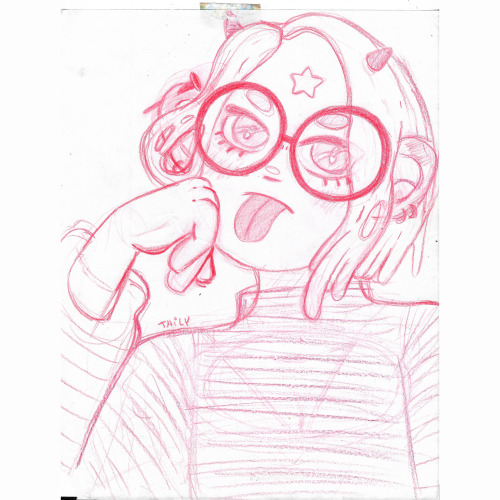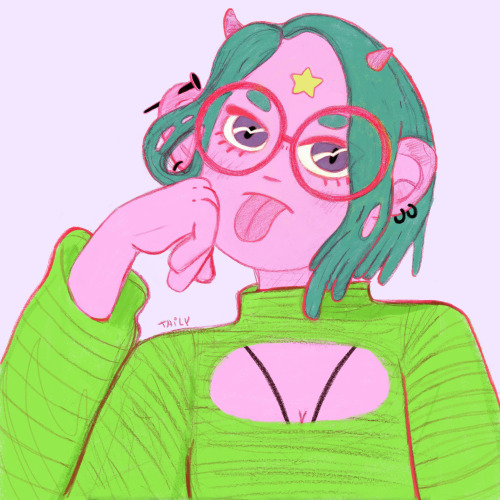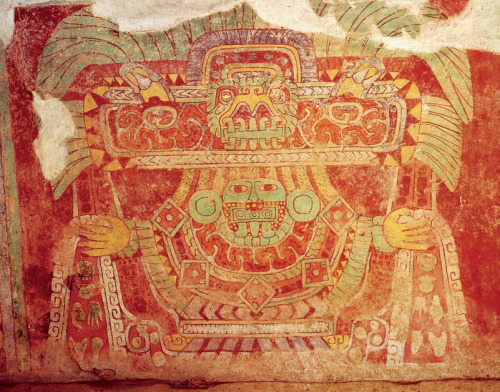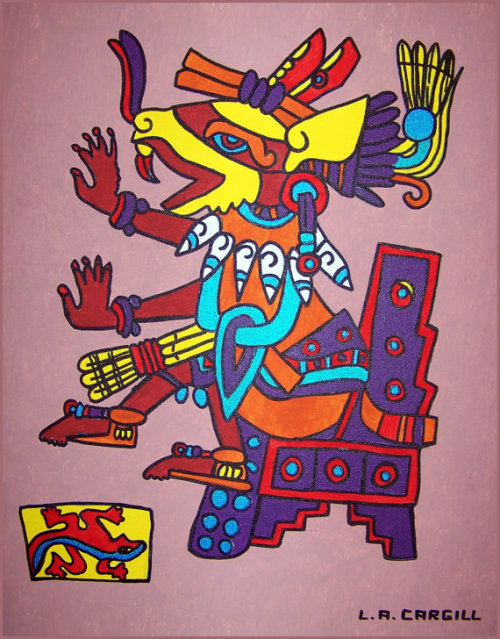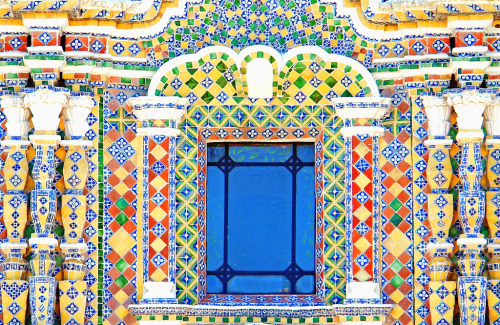#mexican art
Goddess Mural Painting
Tetitla apartment complex at Teotihuacan, Mexico, 650–750 CE
As in most ancient Mesoamerican cities, Teotihuacan’s buildings were once stuccoed over and brightly painted. Elaborate murals covered the walls of it’s elite residential compounds and depicted deities, ritual activities, and processions of priests, warriors, and animals. The muralists eventually settled into a method of applying pigments to a smooth lime-plaster coated with clay. Afterwards they would polish the surface to a high sheen. Most had a restricted palette of varying tones of red (derived from the mineral hematite). Above the mural depicts an earth or nature goddess. Always shown with her face covered by a jade mask and dwarfed by her large feathered headdress, many scholars believe she is the city’s principal deity. (x)
Post link
Huehuecoyotl by Lela Cargill
Lela Cargill has traveled extensively in Mexico and has studied Aztec art for many years. Huehuecoyotl was one of several important gods in the Aztec pantheon. He is known as the god of music. The Aztecs considered music, song, and dance to be cleansing and spiritual activities.
Discover more of Lela’s paintings of Aztec gods atMezc Market!
Post link

“Smiling” (sonrientes) Figure,Remojadas Culture, (Veracruz, contemporary Mexico, Mesoamerica), 7th–8th century, Ceramic with colour, 47.5 x 29.9 x 15.9 cm, The Metropolitan Museum.





These are some details of my painting of Tlaltecuhtli, Earth Lady.
On either side of Tlaltecuhtli appear two Teteo, Mictlantecuhtli, the Lord of Death, and Tlaloc, Our Lord the Rain.
The land of the dead is under the earth, and the lords of rain live in the hollow mountains. Both are accessed by caves which pierce the earth. The joints, such as elbows and knees, are thought of as openings by which one can enter the body and the solid bones. Therefore, her joints are painted with Tlaloc faces, or, sometimes, with skeletal faces. These represent the caves by which one enters the world of the Teteo of death and rain. They also represent her two poles, of life and death, and of the duality which she incarnates.
At the feet of Mictlantecuhtli are two quail. The white spots on the quail’s feathers symbolize stars, and the quail is a symbol of the night time sky. At the feet of Tlaloc is a rattlesnake. The curving, sinuous body of the snake is like the movement of lightning across the sky, and like the curving of rivers as they wind across the earth. Both animals live in caves in the ground, and therefore are bridges between the dark and mysterious world of the Teteo beneath the earth, and the world of humanity on the earth’s surface.
You can find prints of Tlaltecuhtli in my Etsy store!
Tlaltecuhtli Mother Earth Mexica Aztec Earth Goddess | Etsy México



Our ancestors saw humans not as completely feminine or masculine beings, but as a combination of both qualities.
Every person has a side that is spiritually wet, cold, fertile and dark, and another dry, hot, sterile and luminous side.One of the names of this painting, Cihuaoquichtli, means Man-Woman. This is why it is called Man-Woman Duality as well. It also shows the position of the days of the Sacred Calendar in the human body.
This painting, along with Life-Death Duality, will be on display at my show at Art Bug Gallery! The opening is on Saturday!

My show at Art Bug Gallery opens in a few days!
In this exhibit you will be able to see my original painting of Ometeotl, which metaphorically represents the Mesoamerican creator divinity. Ometeotl, Dual Lord and Lady, are everything that exists. They are creator and creation, painter and painting, mother/father and son/daughter. They are all which we understand as reality, placed in time and space.In this painting the main Teteo appear intertwined to represent that They are all but faces of Ometeotl, and to remind us that all life is connected through Their love and generosity.
Ometeotl. Aztec Mexican Spirituality Corazon Mexica Mexica | Etsy México

My painting Patlache or Owner of Wild Cacao is part of a series that explores queer identities in Mesoamerica.
Sources are scarce and contradictory, and little information can be obtained about sex and gender diversity in ancient times. However, there are few cases of what we would call today “queer” identities were registered in colonial manuscripts.
A patlache or owner of wild cacao is a word apparently used to describe a lesbian woman or a trans man. Here are two types of patlache sharing a moment of cacao collection.
You can find this painting as a print in my Etsy store! Click here!










This is my oil painting of Tonalco Tlaltecuhtli, the Earth during the dry season.
Tlaltecuhtli is the Earth Lord and the Earth Lady. She is the Earth itself; Her elbows, breasts, and belly are mountains, Her navel, the hollow of Her throat, the folds that wrap across Her stomach are valleys, and Her mouth and womb caves, entrances by which to enter her body. She is all abundance and all life, but likewise, She is the tomb who shall swallow us all in the end. We do not have four seasons in Mesoamerica, but rather two, Xopan or rainy season, and Tonalco or dry season. As Tonalco Tlaltecuhtli, Her body is painted yellow, to represent the yellow grass of Winter. She is dry, tired, and lacks the energy for growth and life.
I’ll be explaining more details about this painting in other posts!
Tlaltecuhtli will be on display at my upcoming show at Art Bug Gallery in LA! You can also find Her as a print in my Etsy store! Click here!



Cinteotl or Centeotl is the Lord of Maize, whose body is our food and our flesh. Centeotl is also the patron of cacao, the complementary opposite of maize. While one is a solar plant, associated with the Heavens, dryness and the masculine side of the cosmos, the other is a lunar plant, related to the Underworld, humidity and the feminine principle. This is why Centeotl is also the incarnation of duality and balance. Here I presented Him as Lord of the Plant of Cacao, which represented creativity, inspiration and sex.
This piece is part of a series that will be on display at Art Bug Gallery from April 23!
Click here to have access to the special content I post on Patreon!





This is a xiquipiltontli or bag used by the danzantes for transporting offerings and other elements used in Mexicayotl ceremonies, such as flowers and copal.
Depictions of these bags can be found in sources as ancient as Olmec sculptures. They also appear in codices from the time of the conquest and are part of the ritual regalia of many contemporary indigenous groups.
You can see various models of this xoquipiltontli or bag in my Etsy store! Click here!


This is your last chance to see my show!
This week I’ll be hosting special events at Art Bug Gallery!


LAST DAY OF MY PRIDE SALE
Click here to see my Etsy store! There is a special 20% discount ending today!





The metztli or veintena of Huey Tozoztli is coming to an end. During its 20 days we celebrated the deities of maize, which begins to grow with the coming of the rains. Huey Tozoztli is dedicated to Cintéotl, Lord Maize, patron divinity of the fields, and Xilonen, Lady Tender Maize, who is the sprout that breaks the hardness of the Earth’s crust and grows towards the Heavens.
You can find elote or corn cob earrings of different colors in my Etsy store! Click here!




In this scene, Mayahuel, Our Lady Maguey, appears breastfeeding a plumed fish. It is a profoundly symbolic image which shows Her role as mother and nurturer. The plumed fish is a visual metaphor that alludes to Mimich, one of the most ancient divine ancestors of the Mexica. Lord Mimich was a chichimeca, part of a nomad group, and His death represents the foundation of the first villages and cities. The symbol of the plumed fish refers to preciousness, which can be found in the wisdom of our ancestors. The scene, thus, presents Mayahuel, the plant of maguey, as nurturer of humankind from the most ancient of times.
You can find prints of Chichimayahuel in my Etsy store! Click here!



Itzcuintli, the dog, is a symbol of bravery and noble-heartedness. One of its missions is to guide the dead through the dangerous paths of the Underworld, as well as to give their spirits to Mictlantecuhtli, Lord of the Land of the Dead. The dog is a nahualli or spirit animal of Xolotl, Lord of Dual Things, twin and shadow of Quetzalcoatl, the Plumed Serpent.
You can find xoloitzcuintli jewelry in my Etsy store! Click here!


